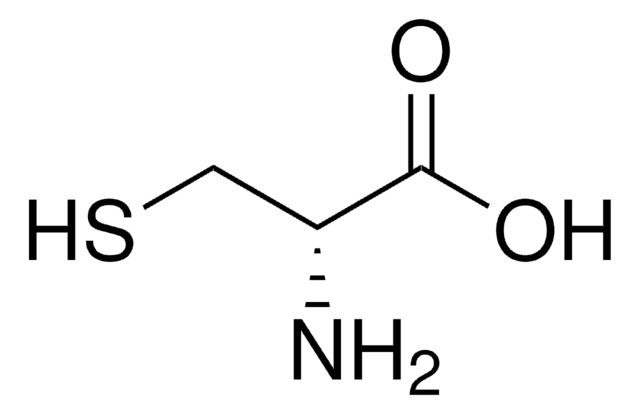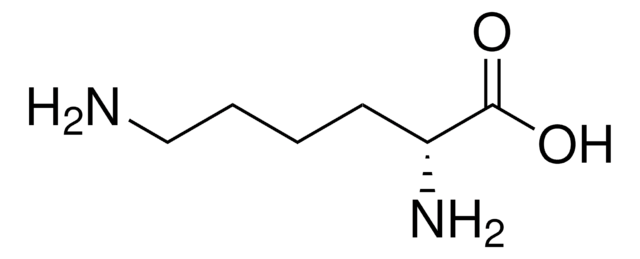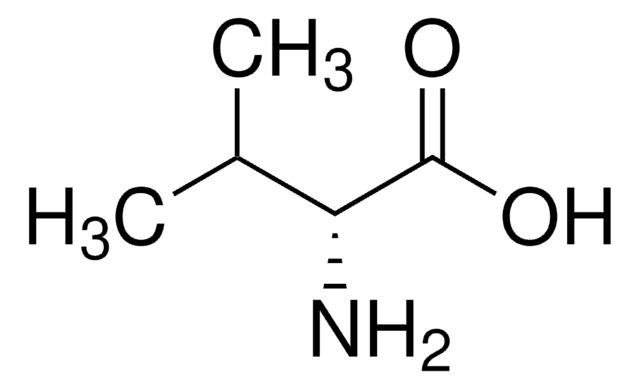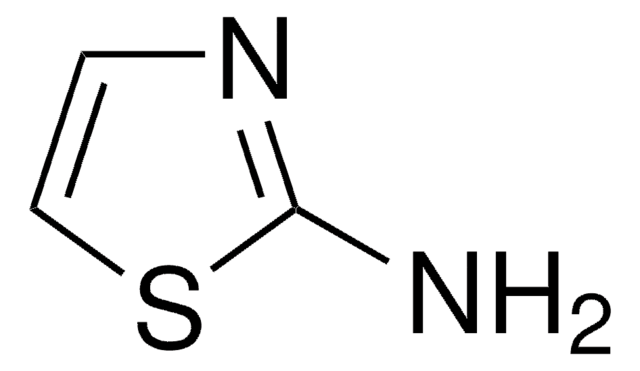Wszystkie zdjęcia(4)
Kluczowe dokumenty
G9003
D-Glutamine
≥98% (HPLC)
Synonim(y):
D-2-Aminoglutaramic acid, D-Glutamic acid 5-amide
Zaloguj sięWyświetlanie cen organizacyjnych i kontraktowych
About This Item
Wzór empiryczny (zapis Hilla):
C5H10N2O3
Numer CAS:
Masa cząsteczkowa:
146.14
Beilstein:
1723796
Numer MDL:
Kod UNSPSC:
12352209
Identyfikator substancji w PubChem:
NACRES:
NA.32
Polecane produkty
Nazwa produktu
D-Glutamine, ≥98% (HPLC)
Poziom jakości
Próba
≥98% (HPLC)
Formularz
powder
kolor
white
Zastosowanie
cell analysis
ciąg SMILES
N[C@H](CCC(N)=O)C(O)=O
InChI
1S/C5H10N2O3/c6-3(5(9)10)1-2-4(7)8/h3H,1-2,6H2,(H2,7,8)(H,9,10)/t3-/m1/s1
Klucz InChI
ZDXPYRJPNDTMRX-GSVOUGTGSA-N
Szukasz podobnych produktów? Odwiedź Przewodnik dotyczący porównywania produktów
Opis ogólny
Glutamine is a non-essential and the most abundant free amino acid present in the human body. It is an important component of proteins and is one of the 20 proteinogenic amino acids. It forms 5-6% of bound amino acids.
Zastosowanie
D-Glutamine has been used to study its role in conferring protection against acetaldehyde-induced disruption of barrier function in Caco-2 cell monolayer.
Działania biochem./fizjol.
Glutamine forms the central metabolite in amino acid transamination via a-ketoglutarate and glutamic acid. This amino acid is metabolized by different enzymes, such as glutaminase, present in liver, and glutamine synthetase, present in skeletal muscle. It is produced in the cytoplasm from other amino acids, predominantly from branched-chain amino acids and glutamate. It plays an essential role in ammonia metabolism and detoxification. Its skeletal muscle levels are significantly reduced post trauma, operation and inflammatory states. It servers as a prognostic marker in fatal sepsis during which its skeletal muscle levels are decreased by 90%.
Inne uwagi
Unnatural isomer of glutamine
Ta strona może zawierać tekst przetłumaczony maszynowo.
Kod klasy składowania
11 - Combustible Solids
Klasa zagrożenia wodnego (WGK)
WGK 3
Temperatura zapłonu (°F)
Not applicable
Temperatura zapłonu (°C)
Not applicable
Środki ochrony indywidualnej
Eyeshields, Gloves, type N95 (US)
Wybierz jedną z najnowszych wersji:
Masz już ten produkt?
Dokumenty związane z niedawno zakupionymi produktami zostały zamieszczone w Bibliotece dokumentów.
Klienci oglądali również te produkty
Indra Saptiama et al.
Chemistry (Weinheim an der Bergstrasse, Germany), 25(18), 4843-4855 (2019-01-18)
The effective utilization of various biomolecules for creating a series of mesoporous boehmite (γ-AlOOH) and gamma-alumina (γ-Al2 O3 ) nanosheets with unique hierarchical multilayered structures is demonstrated. The nature and concentration of the biomolecules strongly influence the degree of the
Erich Roth
The Journal of nutrition, 138(10), 2025S-2031S (2008-09-23)
Glutamine is the most abundant free amino acid of the human body. Besides its role as a constituent of proteins and its importance in amino acid transamination, glutamine has regulatory capacity in immune and cell modulation. Glutamine deprivation reduces proliferation
A Seth et al.
American journal of physiology. Gastrointestinal and liver physiology, 287(3), G510-G517 (2004-08-28)
Role of L-glutamine in the protection of intestinal epithelium from acetaldehyde-induced disruption of barrier function was evaluated in Caco-2 cell monolayer. L-Glutamine reduced the acetaldehyde-induced decrease in transepithelilal electrical resistance and increase in permeability to inulin and lipopolysaccharide in a
Smriti Shridhar et al.
Journal of biotechnology, 257, 13-21 (2017-03-18)
Chinese Hamster Ovary (CHO) cells are the preferred cell line for production of biopharmaceuticals. These cells are capable to grow without serum supplementation, but drastic changes in their phenotype occur during adaptation to protein-free growth, which typically include the change
G Thorsén et al.
Journal of chromatography. B, Biomedical sciences and applications, 745(2), 389-397 (2000-10-24)
A method is presented for the chiral analysis of amino acids in biological fluids using micellar electrokinetic chromatography (MEKC) and laser-induced fluorescence (LIF). The amino acids are derivatized with the chiral reagent (+/-)-1-(9-anthryl)-2-propyl chloroformate (APOC) and separated using a mixed
Chromatograms
application for HPLCapplication for HPLCNasz zespół naukowców ma doświadczenie we wszystkich obszarach badań, w tym w naukach przyrodniczych, materiałoznawstwie, syntezie chemicznej, chromatografii, analityce i wielu innych dziedzinach.
Skontaktuj się z zespołem ds. pomocy technicznej









